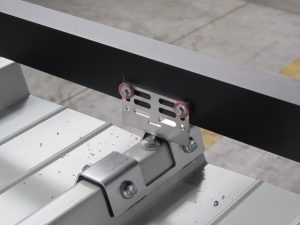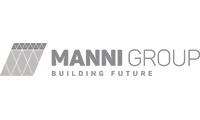Why should you choose a ventilated façade for your building?

The ventilated façade is the solution when the external wall of a building needs to be renovated.
Choosing a ventilated façade means fostering a green sustainable approach to the designing and realization of pre-fabricated buildings, where providing energy efficiency is possible.
The ventilated façade can offer multiple benefits, from the improvement of the aesthetics of the building, to the enhanced value of the real estate. However, those are only some of the advantages which this technological innovation can provide.
This article will explore some of them, starting from the most important one: the energy efficiency and the sustainability.
Ventilated façades: what are they?
The ventilated façade is a dry-construction method which consists of mechanically assembling multiple elements together, providing an easy and quick installation, cleanliness in the working site and the possibility of disassembling each component of the façade when needed.
The ventilated façades are designed in order to create a gap between the external layer and the existing wall of the building where an ascendent air flux is generated, due to the natural thermal gradient of the air temperature.
This phenomenon provides a reduction of the heat load during the hot period and the control of the energy losses during the cold season, both in the fluxes and humidity rate.
The ventilated façade can be used in new building as well as in retrofitting of the external wall of an existing building, where the thermal performances can be enhanced.
Ventilated Façade Constructive method
The ventilated façade constructive methods require a system made of different elements. Therefore, it can be considered a multi-layer approach, where the different layers are installed in a dry construction way. The system is composed by:
- Insulating core
- Structure
- Air Gap
- External cladding
Insulating core:
The insulating core needs to be installed directly on the existing wall of the building. It can be made of insulating sandwich panels with polyurethane foam of mineral wall, which provide excellent level of thermal insulation. Moreover, safety towards fire can be guaranteed by choosing a suitable insulating material.

Structure:
The load bearing structure allows the assembly of the ventilated façade and can be installed, overhanging on the external wall of the building, by means of brackets. It can be made of aluminium or steel.
Air Gap:
The air gap represents the core element of the ventilated façade. In fact, it ensures the air flux, fostering the chimney effect which provides benefits in terms of energy efficiency.
It usually is a 4 to 8 cm width-gap. It is necessary to verify the lack of barrier to the air flux on the wall which could compromise the benefit of this dry-construction methods.
External cladding:
Different materials can be used to realise the external cladding of the ventilated façade; each of them has its own aesthetical value. In any case, the material must be waterproof and fireproof. Moreover, it must ensure resistance to the weather conditions, maintenance easiness and lasting reliability.
Advantages of the ventilated façades
A ventilated façade offers multiple benefits to a building, such as:
- Energy efficiency; as already mentioned, the ventilated façade is able to provide thermal insulation both during the cold and hot season. Therefore, energy savings are possible.
- Eco-sustainability: being able to ensure energy savings by better insulation, this solution provides also a reduced environmental impact. This aspect is important and needs to be constantly monitored by designers and architects, who recognise its relevance.
- Acoustic insulation: the multilayer system is ideal to absorb noise from the external environment. This imply that a reduction of the acoustic pollution is possible, with a consequent increase of the internal comfort of the building.
- Ease of maintenance; the installation of the panels is realized in a way that its removal for inspections is always guaranteed.
- Aesthetics improvement: designers and builders can choose among a wide range of materials and finishing. In this way, the best aesthetics output is ensured.
- Ease of deconstruction and recyclability. Thanks to the off-site approach and the dry construction method used for the realization of the façade with plug & play modules, the system can be easily disassembled and recycled upon end of life, unlike traditional solution which generates construction waste both during the building process and upon end of life
Authors
Manni Group, founded in Verona in 1945, drives the international market of steel processing, insulating panels and renewable energy and energy efficiency. The Manni Group holding comprises 14 companies operating in 3 different business areas. Manni Group promotes innovation in the processing and use of steel and a sustainable, safe and efficient construction through constant efforts in the R&D.
 This project has received funding from the European Union’s Horizon 2020 research and innovation programme under grant agreement no. 847053.
This project has received funding from the European Union’s Horizon 2020 research and innovation programme under grant agreement no. 847053.
This website reflects only the author’s views. The European Climate, Infrastructure and Environment Executive Agency is not responsible for any use that may be made of the information it contains.

